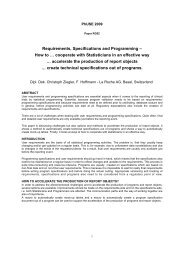

In pe ri od 2, a si ng le or al do se of qu in id in e at 600 mg was adm ini ste red, fol low ed by a sin gle ora l dos e of loperamide at 16 mg 1 h later. In period 1, subjects received a single oral dose of lope- ra mi de at 16 mg.

Eligible sub- jects were admitted to the Clinical Trials Center at Seoul National University Hospital 1 day prior to each period. Because HM30181 has been known to have a very long half-life of 75.7–169.3 h after a single oral dose, a fixed sequence design was used in the present study such that HM30181 was administered in period 3. This study was conducted in an open label, fixed sequence, three treatmen t, three period, crossov er desig n with a ra nd om as si gn me nt to a HM 30 18 1 do se in pe ri od 3. The pharmacokinetic profiles of HM30181 at various doses were also evaluated.

The objectives of the present study were (i) to evaluate the effe ct s of a si ng le or al do se of HM 30 18 1 on th e pharmacodynamics, particularly CNS opioid effects, and pharmacokinetics of loperamide, which is used as a probe drug for P-gp and (ii) to compare them with those of qui- nidine, a well-known P-gp inhibitor. Loperamide is removed by hepatic metabolism mainly by CYP3A4 with minor contributions from CYP2C8. Therefore, if the P-gp in the blood–brain barrier is inhib- ited, the CNS effects of loperamide such as reduced pupil size and respir ator y depres sion will becom e appar ent.

This is why loperamide in the blood–brain barrier is not associ- ated with CNS effects even though it is a potent opioid. Bec aus e lop era mid e is a sen sit ive sub str ate of P-gp, it is pumped out of the gut endothelium and the brain (i.e. Loperamide is an anti-diarrhoeal agent, which reduces gut motility by acting on the opiate receptor in the large int est ine. However, the P-gp inhibitory effect of HM30181 has not been investigated in humans. HM301 81 (N-(2 -(2-( 4-(2-( 6,7-di metho xy-3,4 -dihy dro- isoquinolin-2(1H)-yl)ethyl)phenyl)-2H-tetrazol-5-yl)-4,5- dimethoxyphenyl)-4-oxo-4H-chromene-2-carboxa mide) is a third generation P-gp inhibitor currently under develop- me nt to en ha nc e th e or al ab so rp ti on of P- gp su bs tr at es. Ho we ve r, be ca us e P- gp is fo un d in ma ny different tissues in the body, unexpected adverse effects can still occur due to the unintended inhibition of P-gp elsewhere, of which, adverse effects in the central nervous system (CNS) can be serious. Compared with the first and secon d gener ation s, the third -gener ation P-gp inhibitor has been known to be more selective and less interacting with other transporters, leading to fewer si de ef fe ct s. Becau se P-gp plays an impo rtant role in drug absorp- tion and disposition, inhibition of its function has been a target of drug development programmes. P-g p is ove rex pre sse d in can cer cel ls, whi ch res ult s in multidrug resistance. In addition, P-gp in the brain endothelial cell acts as a blood–brain barrier by preventing xenobiotics from entering the cerebral tissue. P-gp interferes with the absorption of several drugs into enterocytes, whereas it facilitates drug excretion from hepatocytes and renal proximal tubular cells via the bile or urine, respectively. P-gp exists in various tissues including the intestine, liver, kidney and brain.
#Winnonlin wiki pro
P-glycoprotein (P-gp) is a trans-membrane efflux protein tha t rem ove s xen obi oti cs fro m cel ls by ATP hyd rol ysi s, pro - tecting the human body from exogenous substances.


 0 kommentar(er)
0 kommentar(er)
